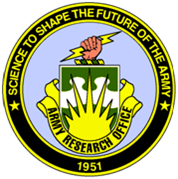Links:
Home
Page
Investigator
Profiles
Project
Overview
Task
1: Theoretical &
Experimental Study of Defects
Task
2: Innovative Growth
and
Fabrication Processes for Defect Reduction
Task
3: Evaluation of
Defect
Reduction Approaches and Device Applications
Broader
Impact
Kickoff Meeting
Kickoff Documents (Restricted)
|
Project Overview
Motivation
Antimony-based type-II
superlattice (T2SLs) offer advantages for MWIR (Midwave Infrared) and
LWIR (Long-Wave Infrared) laser and detector applications due to their
broad bandgap tunability and material uniformity. The
performance of T2SL IR detectors is predicted to be superior to that of
MCT (HgCdTe) IR detectors. Recent intensive research on novel
T2SL structures has demonstrated significant progress and interesting
device physics, but the predicted high performance has yet to be
realized as T2SL IR detectors are still limited by defects and
interface-related traps. A thorough understanding of defect
physics, growth processes, and detector theory is crucial for the
suppression of defect formation and their adverse effects.
Objectives
Given
the motivation for
this project,
the main objectives are:
- Identify and
understand
the
origin of point defects, line defects, interfacial traps, and surface
states in T2SL structures through experimental studies closely coupled
to theoretical modeling.
- Correlate
defect
properties
with device performance as a function of operating temperature,
including minority carrier lifetime, detector noise, dark current,
breakdown voltage, shunt resistance, and surface recombination.
- Examine novel
MBE and
MOCVD
growth methods and passivation techniques that eliminate and or
mitigate defects in InAs/GaSb, InAs/InGaSb, and InAs/InAsSb T2SLs.
- Develop a
comprehensive
device
physics model that includes extrinsic material properties to accurately
predict device performance and provide vital device design rules.
Approaches
The
specific research
activities for this
team include:
- Carry out
in-depth
studies of
the physical origins of the defects as well as their structural,
electrical, and optical properties.
- Utilize
advanced in-situ
and
ex-situ tools and methods to study and probe T2SL defects during
growth, on as-grown structures, and in fabricated devices.
- Study
surfactant mediated
growth, graded interfaces, short-period superlattice buffers,
post-growth treatment, H2-implant
passivation, and surface
passivation.
- Investigate and
minimize
the
impact of defects on the performance of lasers and detectors through
optimizing active layer thickness, barrier placement, and doping
profile.
- Fabricate and
characterize T2SL
structures and devices to provide the device and materials parameters
necessary for current and next generation device modeling work.
|



